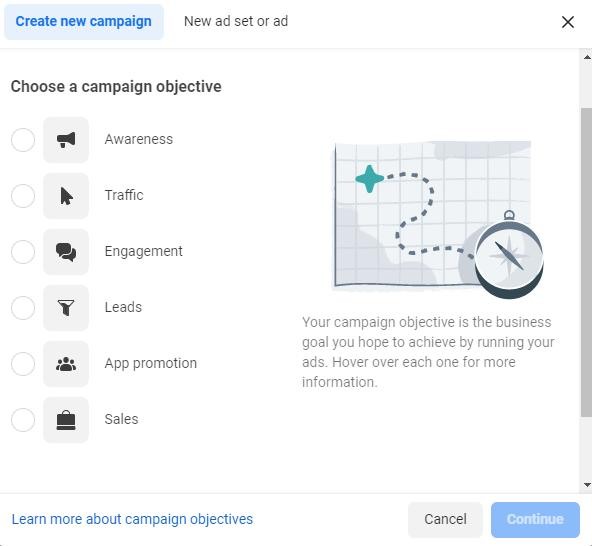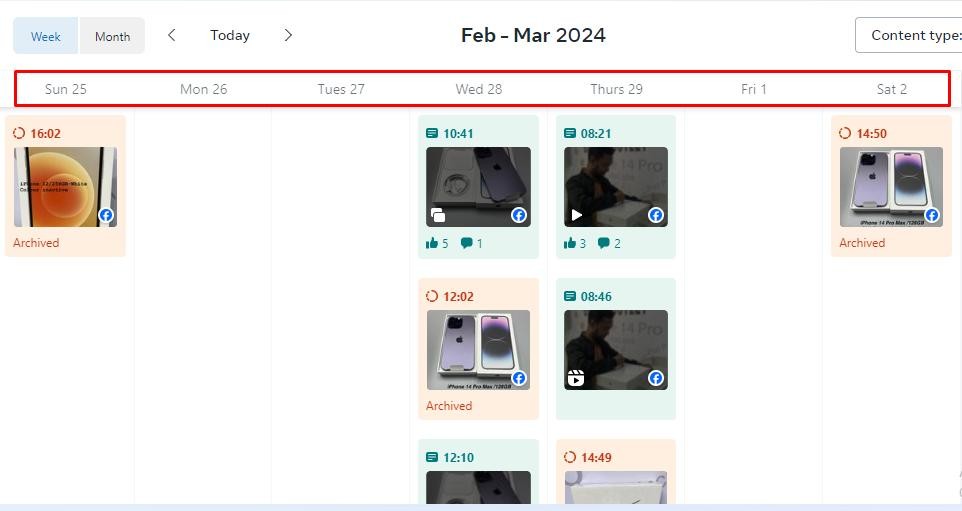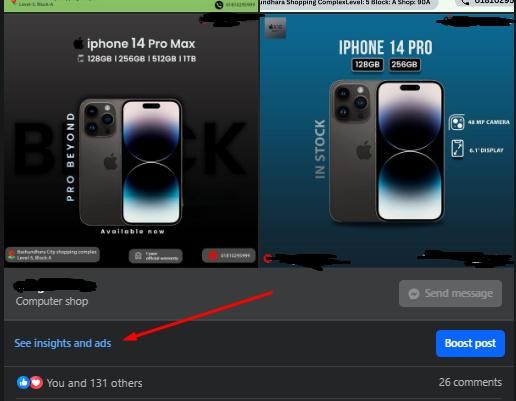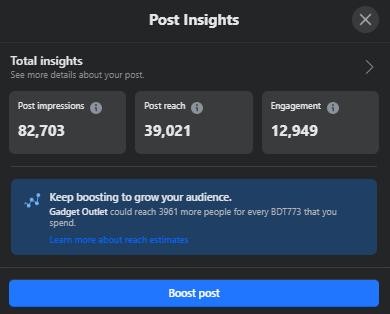How to Track and Measure Social Media Marketing Efforts?
“A significant majority of marketers believe social media analytics tools are crucial to understand their audience and track and measure social media marketing efforts.”
Understanding the return on investment (ROI) of social media marketing is essential for businesses. It’s not just important; it’s crucial. Businesses need to dedicate time and resources to gauge their social media ROI.
Did you know that nearly 80% of consumers report making purchases based on recommendations from social media?
Therefore, as a business, if you aren’t utilizing social media as part of its marketing strategy, you’re missing out on a huge opportunity.
Having worked as a social media marketing manager, I’ve witnessed the impactful potential of strategic social media marketing. Also, I have seen many businesses treat social media like a black box, throwing content and ads out there without a clear understanding of their impact. This scattershot approach makes it impossible to know if your efforts are paying off.
This is where measuring the return on investment of social media marketing becomes crucial. Measuring social media ROI is like tracking the success of your social media efforts and determining what works for you and what doesn’t.
It also allows you to optimize your strategy and allocate resources more effectively.
Therefore, I’ve crafted this comprehensive guide to help businesses measure their social media marketing ROI effectively. In this post, I’ll provide practical tips to maximize ROI in social media campaigns.
By the end of this post, you’ll be equipped with the knowledge and tools to transform your social media presence from a guessing game into a powerful revenue-generating machine.
What is Track and Measure Social Media Efforts?

Tracking and measuring your social media efforts is all about understanding how your social media presence is performing and using that information to improve your strategy. It’s like having a scorecard for your social media activities, showing you what’s working, what’s not, and where you can make adjustments.
Tracking and measuring your social media efforts is crucial for any business that wants to get the most ROI from social media marketing. Social media ROI signifies the return a business gets from its social media marketing efforts. A positive ROI means the benefits outweigh the costs, making social media marketing worthwhile.
However, before delving into the intricacies of measuring SMM ROI, you need to have clear objectives and desired outcomes in mind. Without clear objectives and outcomes, you can’t decide where to allocate your resources and effort effectively.
Ask a few questions yourself: “What are my business goals for social media marketing?” and “What specific action do I want my audience to take?”
Clearly defining your objectives and desired outcomes will help you determine the right key performance indicators (KPIs) to track and measure your social media efforts effectively.
Social Media ROI for Different Business Models
Social media marketing isn’t the same old approach anymore where marketers solely rely on eye-catching headlines, call to action, and graphics for engagement, conversion, and sales. In today’s competitive marketplace, marketers need to go beyond traditional tactics and embrace a more personalized and data-driven approach.
It requires a strategic and data-driven approach in every step from defining audience and platforms to measuring ROI.
Different businesses have different goals. And so their approach to social media marketing, and how they measure success, should also differ.
Here’s a breakdown of how various business models can leverage social media and track their ROI for optimal results:
E-commerce Businesses
E-commerce business is heavily reliant on sales and conversions. Since the business model is centered on website traffic and online transactions, they can use social media to drive relevant traffic and increase conversions.
If you are an e-commerce and also utilizing social media platforms, then you must focus on tracking and measuring your social media marketing efforts to maximize ROI.
As an ecommerce, you can focus on metrics such as engagement, impressions, reach/virality, share of voice, referrals, conversions, and response rate/time. Here are the strategies that e-commerce businesses can consider:
- Focus: Driving traffic to your online store and converting visitors into paying customers.
- Strategies: Utilize shoppable posts, influencer marketing, and retargeting ads for abandoned carts.
- Key Metrics: Website traffic, conversion rates, customer acquisition cost (CAC), average order value (AOV), customer lifetime value, net promoter score, bounce rate, refund, and return rate, Total revenue, and average profit margin.
- Tracking ROI: Analyze how your social media efforts contribute to website traffic and conversions. Track the cost per acquisition (CPA) through social media ads and compare it to the average order value to ensure profitability.
Offline Stores
If you are an offline store and want to increase foot traffic and drive sales to your physical location, social media can still be a valuable tool. However, offline stores with a solid website has the advantage of integrating social media marketing efforts with online sales tracking. Don’t have a website? You can still leverage social media to promote in-store events, offers, and discounts.
- Focus: Increasing brand awareness and driving foot traffic to physical locations. Promoting in-store events, discounts, and offers.
- Strategies: Offer in-store discounts for social media followers, host local events with social media promotion
- Key Metrics: Foot traffic (trackable through in-store promotions or wifi logins), brand awareness, social media mentions driving in-store visits.
- Tracking ROI: Monitor the increase in foot traffic after implementing social media campaigns. Analyze social media mentions containing your location to understand how social media drives in-store visits.
Service Businesses
Service businesses can highly benefit from social media marketing and measure their ROI in different ways. If you are someone running a service-based business, you can leverage social media to showcase your expertise, build trust with potential clients, and generate leads. Here is a practical roadmap for measuring ROI for service businesses.
- Focus: Generating leads and establishing yourself as a thought leader in your industry.
- Strategies: Showcase client testimonials, provide valuable content establishing expertise, and run social media contests to generate leads.
- Key Metrics: Lead generation (e.g., contact form submissions), brand reputation (sentiment analysis of social media mentions).
- Tracking ROI: Track the number of leads generated through social media channels. Monitor social media sentiment to assess brand reputation and the impact of your social media efforts.
SaaS Businesses
SaaS startups can also benefit greatly from social media marketing. Social Media has an increasing impact on customer acquisition and retention in the SaaS industry. By focusing on the right metrics and strategies for your SaaS business, you can effectively leverage social media to drive user engagement and increase customer loyalty. Here is how you can do it:
- Focus: Increasing brand awareness, driving free trial signups, and nurturing customer relationships.
- Strategies: Share educational content addressing customer pain points, utilize social media for customer support interactions, and run social media ads targeting ideal customers.
- Key Metrics: Free trial signups, customer lifetime value (CLTV), social media engagement on content promoting product features.
- Tracking ROI: Analyze how social media contributes to free trial signups and customer acquisition. Track customer lifetime value (CLTV) to understand the long-term impact of social media on customer retention.
Tracking Your Social Media ROI: A Step-by-Step Guide
So, here is the main part. If you don’t know how to track and measure your social media ROI, consider hiring a social media marketing manager. They will have the expertise and knowledge to track and measure social media marketing efforts and can help improve your conversions and sales.
Don’t have a dedicated marketing manager? No worries, I have created a step-by-step guide to help you effectively track your social media ROI.
To keep things easier, I am considering only one social media platform, which is Facebook, but you can apply these principles to other platforms as well. Since Facebook has the highest number of daily users and offers robust tracking and analytics tools, it’s a great starting point for your social media journey.
To track your social media ROI on Facebook, here are the steps you can follow:
Step – 1: Define your social media goals
Before diving into data, set clear goals for your social media presence. What do you want to achieve? Do you want to increase brand awareness, drive website traffic, generate leads, or boost sales?
Today most social media platforms offer sophisticated targeting options that allow businesses to reach specific audience segments. For instance, Facebook’s advertising options provide a set of goals from which you can choose the one that aligns with your advertising objective.
Based on SMM goals, you need to define your content strategy and plan for overall approach for your social media marketing. It will help you determine the types of content you create and the metrics you track.
So, before spending your advertising budget, make sure you have a clear understanding of your objectives.

Step – 2: Plan and create content strategy
Now that you’ve identified your goals and relevant metrics, it’s time to craft a winning content strategy. Dive into creating compelling and engaging content that truly speaks to your target audience. Mix it up with various content types like images, videos, infographics, and blog posts to keep your audience hooked.
But here’s the kicker: quality trumps quantity every single time in the realm of content creation. Moreover, maintaining consistency is key to forging a strong and recognizable brand presence across social media platforms.
To maintain consistency, one effective approach is to establish a content calendar. This is an exclusive feature that you can find on the most common social media platforms like Facebook, LinkedIn, YouTube, etc. By utilizing a content calendar, you can plan ahead and schedule posts for a month, ensuring that your content is consistently delivered to your audience at the right time.
Here is Meta Business Suit’s built-in content calendar system.

Step 3: Leverage Social Media Analytics and Advertising Tools
Continuous posting is just a part of the puzzle, you need to look beyond the numbers and analyze the performance of your content. Identify which type of content resonates the most with your audience, generates the highest engagement, and conversions.
Most social media platforms offer built-in analytics dashboards. These analytics dashboards provide valuable insights into the performance of your posts and campaigns.
Also, there are tons of third-party social media analytics tools available that can provide in-depth analysis of your social media data. I will provide a list of social media analytics tools at the end of the article.
Here are examples of Facebook analytics tools designed to help businesses analyze their content performance.


Step 4: Calculate Your Cost of Investment (COI)
Now that you’ve delved into the importance of analyzing content performance, let’s explore the next crucial step: calculating your Cost of Investment (COI) in social media marketing. Before reaping the benefits, it’s essential to understand the total expenses incurred throughout your social media marketing endeavors.
To accurately assess your return on investment (ROI), you must first define your COI. This encompasses various expenses, including
- Advertising costs
- Content creation costs (e.g., designers, copywriters)
- Social media management tool subscriptions
- Employee time spent on social media
But here’s where it gets interesting: by calculating your COI, you’ll gain a comprehensive understanding of the financial landscape surrounding your social media strategy. This insight not only helps in evaluating the effectiveness of your current approach but also paves the way for informed decision-making and strategic adjustments moving forward.
Step 6: Calculate Your Return on Investment (ROI)
There is no one-size-fits-all approach to measuring ROI for social media, as it can vary depending on your goals and objectives. However, there is a common and straightforward formula that can be used to calculate ROI:
ROI = (Return on Investment) / (Cost of Investment) x 100
If your campaign goal is to generate sales, then the Return on Investment can be calculated by dividing the revenue generated from social media campaigns by the total cost of investment. This will give you a percentage that represents the return on investment for your social media efforts.
Step – 7: Analyze and Refine
Tracking ROI is an ongoing process. Continuously analyzing your social media performance and using insights to refine your strategy is the key to success. Adjust your strategies, content, and campaigns based on insights and analysis report. This will also help you to optimize performance to align with changing business goals and market dynamics. Analyze your social media metrics and ROI on a regular basis to identify what’s working well and what needs improvement.
Importance of Tracking Social Media ROI
Social media marketing is a powerful tool, but its effectiveness hinges on your overall marketing approach.
Businesses often fail to fully capitalize on their social media efforts due to inadequate planning and utilization of their marketing budget.
To avoid wasting resources and to maximize the return on investment, it is crucial for businesses to track their social media ROI. Here are a few reasons why measuring social media ROI is important:
Benefits of Tracking ROI
- Uncover valuable insights about audience demographics, behaviors, and preferences
- Enables businesses to refine their targeting for better results
- ROI tracking reveals which social media campaigns are driving the most value
- Understanding ROI helps businesses allocate their social media marketing budget strategically
- Helps to ensure that every dollar spent generates the highest possible return
Drawbacks of Not Tracking ROI
- Without tracking ROI, businesses may not know if their social media efforts are effective or delivering any tangible results
- This lack of insight can lead to wasted resources and missed opportunities for improvement
- Without tracking ROI, businesses may struggle to justify their social media marketing budget to stakeholders or upper management
- Miss out on opportunities to optimize their social media campaigns and make data-driven decisions
Tools to measure social media ROI
While the core steps to tracking social media ROI involve setting goals, identifying relevant metrics, and calculating ROI, there are numerous tools available to make this process smoother and more efficient. Here’s a breakdown of some popular options:
Free Built-in Analytics
Most social media platforms: Major platforms like Facebook, Instagram, Twitter, and LinkedIn offer built-in analytics dashboards. These dashboards provide basic insights into key metrics like reach, engagement, impressions, and website traffic generated from your social media activity.
Free/Freemium Social Media Management Tools
Buffer, Hootsuite, Sprout Social: These tools offer more advanced social media management functionalities, including scheduling posts, managing multiple platforms, and basic analytics reporting. Many have free plans with limited features, while paid tiers offer more in-depth analytics capabilities.
Social Media Listening Tools:
Brand24, Mention, Sprout Social Listening, these tools go beyond basic analytics and delve into social media conversations about your brand or industry. They can help you track brand sentiment, identify influencers, and understand how your target audience perceives you on social media. (These tools typically have paid plans)
Social Media Advertising Platforms:
Facebook Ads Manager, LinkedIn, and Twitter Ads: If you run paid social media advertising campaigns, the native advertising platforms of each network offer detailed analytics on ad performance. These metrics can help you measure the effectiveness of your paid social media efforts in achieving your goals (e.g., website traffic, lead generation, sales).
Choosing the Right Tool:
Remember, Don’t get overwhelmed by the variety of tools. Start with the built-in analytics on the platforms you use and consider adding more advanced tools as your social media marketing efforts evolve. The key is to leverage data to gain valuable insights and optimize your social media presence for maximum ROI.
Let’s Recap
In today’s digital landscape, social media has become an undeniable force for businesses. But simply having a presence isn’t enough. To truly harness the power of social media and achieve real business results, tracking your ROI (Return on Investment) is essential. By measuring your social media efforts and understanding what resonates with your audience, you can optimize your strategy for maximum impact.
Remember, social media marketing is a data-driven game. By embracing a data-driven approach, you can transform your social media presence from a guessing game into a measurable revenue generator.
Looking for someone who can help you navigate and optimize your social media strategy?
Contact me today to schedule a consultation and discover how I can help you transform your social media presence into a powerful revenue-generating machine!





Boost Your Small Business with Effective Social MM Strategy
[…] to track and measure results. Unlike traditional advertising, where it’s challenging to track & measure ROI accurately, social media platforms offer robust analytics tools that allow businesses to monitor key metrics […]
10 Benefits of Hiring a Freelance Copywriter for Your Business
[…] need to track and measure the performance of the copy to determine its impact. Investing in a freelance copywriter can […]